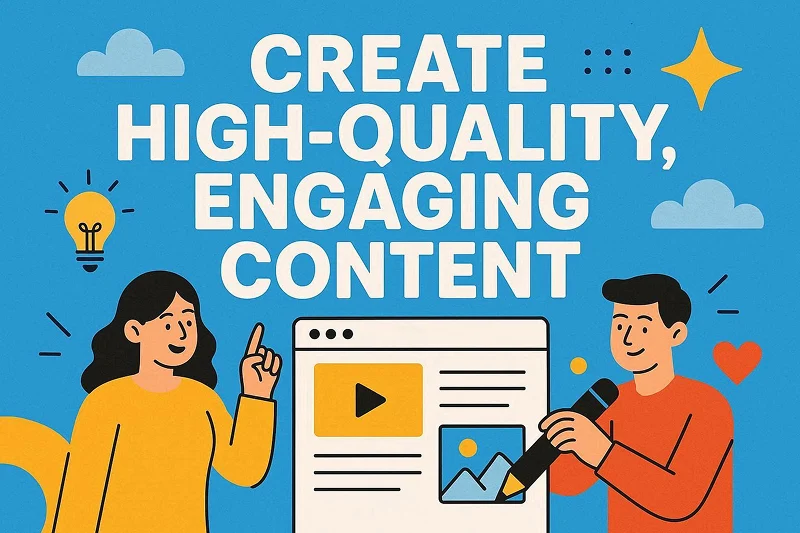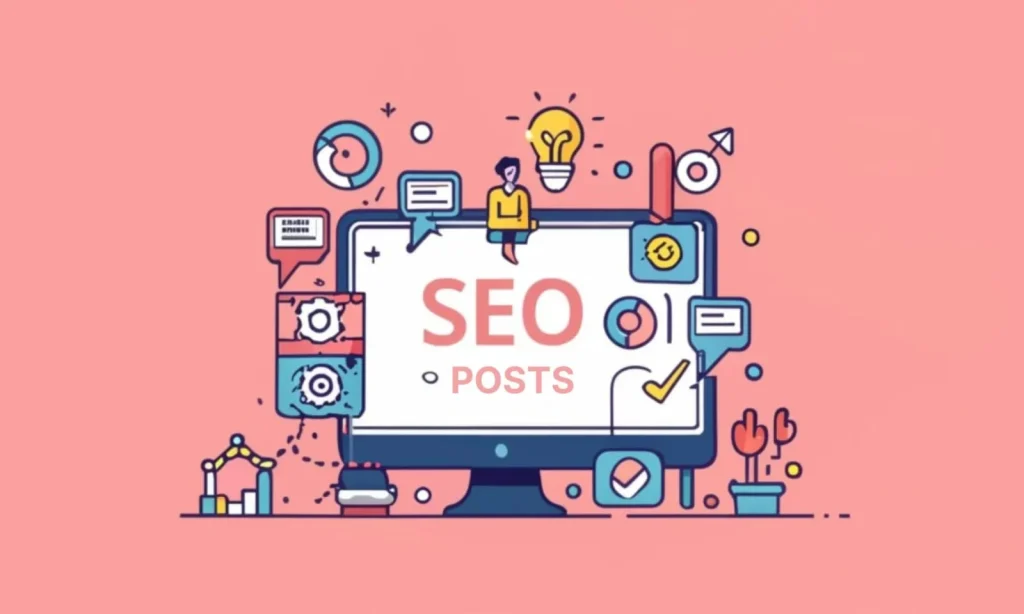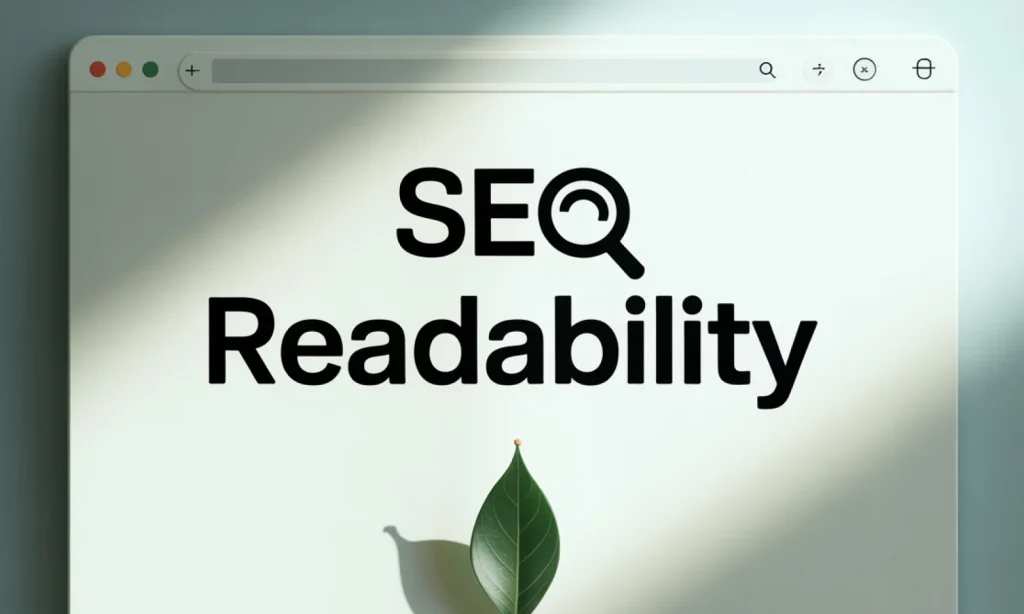Top 10 on-Page Seo Optimization – Need a Proven Help?
On-page SEO optimization is integral for the websites that want to notch up their visibility in the search engines ranking.
So kindly applying effective methods is crucial to achieving relevance, credibility and the wanted impact from SEO.
Furthermore this guide will serve as a thorough hoe and discuss main on-page SEO optimization strategies.
This approach will make your site more visible and associated with appropriate keywords when the search for organic traffic takes place.
Table of Contents
- 1. Keyword Research and Optimization for On – page
- 2. Optimize Title Tags and Meta Descriptions
- 3. Create High-Quality, Engaging Content
- 4. Optimize Heading Tags (H1, H2, H3, etc.)
- 5. Improve Page Loading Speed
- 6. Optimize Images With Alt Text
- 7. Internal Linking
- 8. Mobile-Friendly Design
- 9. Schema Markup
- 10. Day Today Update and Maintain Your Website
- Conclusion
1. Keyword Research and Optimization for On – page
First, keyword research has been proved to be the fundamentals of on-page SEO. Not to make a generalization, there are keywords pertinent to your business entity and products or services.
Here is a careful introduction to the topic of the article, so the meta tags they are possible to use and the headings enhances the visibility of the site and helps to achieve SEO goals.
Overall through Google Keyword Planner you may identify the keywords of your potential clues.
Search engine optimization is scaling the SEO experiments, and the keywords that are being used are those that can bring you more organic traffic to your website and have an overall growth of your website performance.
2. Optimize Title Tags and Meta Descriptions
In short the title tags and meta descriptions are usually crisp and precise, describing in search engines the results page about the website.
So these elements are in HTML. Make them keyword-rich to increase the site’s ctr as well as mentions.
Content must have good descriptive details that are clear-cut and exciting so as attract users to click.
3. Create High-Quality, Engaging Content
Undoubtedly, content is the king when is it SEO optimized. So please come up with neat articles that meet people’s needs and desires.

Concentrate on the problems and needs they have and thus address them appropriately. So naturally include the target keywords for enhanced optimization outcomes.
Overall create an interactive, special and engaging environment for learning through the incorporation of animations, simulations, and virtual reality technologies.
Make sure that it is prominently readable and relatable. Therefore, make use of subheadings, bullets, and images which bring easier perception.
Of course, here are some brief explanation of each point:
1. Create High-Quality, Engaging Content:
In fact pay attention to providing Original, informative and outstanding content which best satisfies your readers needs.
Make it captivating and whereas interesting to ensure the guests are keep longer.
2. Ensure the Content Provides Value to Your Audience:
Likewise every content should try to cover the problems or concerns that your audience deals with and give attention to what is important for them.
So make them more knowledgeable, give them some hints or solutions that they can rely on. “The Roles of Women in the Renaissance” by Jane W. currently has 0 responses.
3. Address the Needs and Pain Points of Your Audience:
Find out what matters to those people: what challenges, problems, or concerns of theirs you are going to address.
Try and form your content to give solutions or find ways to lessen these problems.
4. Incorporate Target Keywords Naturally into the Content:
Incorporate relevant keywords naturally in your content without the over-usage of those words and have the user experience of reading it as a priority.
5. Maintain Readability and Relevance Throughout:
Make sure your content is easy to comprehend and follows a simple format.
Which includes short sentences, an appropriate language level, and proper presentation. Keep your content interesting to all your audience, whatever trend or status quo.
6. Use Headings to Organize the Content Effectively:
Organize the content for viewer’s comfort by using descriptive headings with the aim of dividing it into sections.
This serves readers as a birdwatcher scans the sky for certain birds thus quickly navigating the content to find what they are looking for.
7. Utilize Bullet Points to Highlight Key Information:
Apply a bullet list to display a certain complicate information which is decomposes to friendly, digestible points.
This will later assist in the ease of reading and understanding what it is all about.
8. Include Relevant Images to Enhance Engagement:
Including captivating images on your content is a significant element that adds more value by aiding on passing a message.
Pictures are likely to raise engagement among your audience without them forgetting your message.
9. Break up the Content to Make it More Accessible to Readers:
Don’t write in a subjective essay using big chunks of text, but break it down into smaller ones, separated by paragraphs or sections.
The level of difficulty is reduced this way, thus information need not to be remembered but just glossed over when it is presented digitally.
10. Prioritize User Experience and Satisfaction:
Ultimately, content should be develop to serve its viewers by providing value and engaging them.
Concentrate your own efforts on knowing and serving their needs, listen to them, and communicate with them in such a manner that they resonate with your content.
4. Optimize Heading Tags (H1, H2, H3, etc.)
Heading tags are HTML elements for the building of website content structure in the form of a hierarchy.
Use heading tags like (H1, H2, H3, etc.) to regulate your content and to show its significance to search engines .
Add keywords. So that will describe your content signified by heading tags in order to boost your SEO and thus provide better readability.
Be sure to check whether or not each heading is as insightful as what it has been produce for, thus helps users to navigate throughout your page properly.
5. Improve Page Loading Speed
One of the most critical factors on page SEO is how quickly it loads. A slow-loading website will have a constantly frustrated user, and the possibility of higher bounce rates.
Streamline your webpage’s load time improving picture compression, extracting CSS and JavaScript code, and using browser caching.
Utilize services like PageSpeed Insights, delivered by Google, to diagnose and resolve any issues that might influence your site’s loading speed.
6. Optimize Images With Alt Text
Images are the important page-ranking factor of on-page SEO tuning. The usage of keywords (relevant keywords) is crucial for websites that want to be found by people who are not actually looking for content, but rather some specific items or topics.
The use of alt text is not only an aid to search engines to know the content and could be a bonus for the visually impaired people. Use descriptive gallery titles and image descriptions in order your images to be significant to your SEO value.
So here are some SEO techniques for Alt text:
1. Optimize Images With Descriptive Alt Text:
- The alt text, or an Alternative Text, is a short phrase that explains the content of the image. Images are immensely powerful in this domain; therefore, with the use of descriptive alt text, such as keywords, you convey the meaning behind your images. Such mechanisms will be receptive to your website’s ranking.
2. Include Relevant Keywords in Alt Text for Your Seo:
- Alt-text, the text associated with images, can indicate to the search engines about the usage of relevant keywords which can help in matching the image to relevant search queries. This will greatly increase the chance that your images are listed to the search results that have those keywords.
3. Improve Accessibility With Informative Alt Text:
- Alt text acts as a reference describing to visually disabled users the meaning of the images for such users. Alt tags become very useful especially in checking whether various users’ abilities can grasp the image content.
4. Use Descriptive Filenames for Images:
- Use description characters in filenames while saving images on the website instead of random numbers or letters. Such filenames can better reflect the content of the image. By doing this the website page is well organized and simplified for search engines.
5. Add Captions to Enhance Seo Value:
- Captions can be characterized as a closed description of an image which gives more details to help one understand. Incorporating subtitles boosts their regional value too as SEO provides the search engines with much more information to index.
6. Ensure Alt Text Accurately Describes Image Content:
- Making sure that the alt text is not in the relevant context of the image is imperative. This is good for search engines and users as images get better comprehension of their embodiment, resulting in improved search graph and experience by users.
7. Prioritize Readability and Relevance in Alt Text:
- While writing alt text, the first priority is to make it readable and to the point. Be as explicit as possible in the description of the image using brief and straightforward words while including keywords at appropriate times.
8. Avoid Keyword Stuffing in Alt Text:
- While it is crucial to make sure you have relevant keywords in alt text, you should avoid overdoing it and not commit keyword stuffing. Attention to the descriptions of the content presented in a way that increases the end-user’s experience and is consistent with the material being displayed is vital.
9. Test Alt Text to Ensure Compatibility and Effectiveness:
- One vital thing to do is to background-check the alt text of your images to see whether it is optimized to work for different browsers and devices. Check reliability of alt texts for the SEO purpose and, if necessary, make adjustments..
10. Regularly Update and Review Alt Text for Optimization:
- SEO is a continuous competition, therefore, it’s definitely important to periodically edit and implement new alt text for the images. It implies that the keywords get updated as per the common requirements, which helps them work towards the SEO goals and accurately show the contents.
Note*
“ Let me know if you need further clarification on any of these points, which I noted above ”
7. Internal Linking
Internal linking is a crucial on-page SEO technique that would make web pages discoverable, as well as let search engines crawl and keep them in the indexes.
The operator makes it so that it is easy to connect to the web pages that are logically related, and then the link equity can be distributed in the whole site.
So embellish descriptive anchor text which features keywords and optimize links inwards for SEO.
8. Mobile-Friendly Design
The advancements in digital traffic with mobile devices can’t be overlooked. So the reason why it is vital to have a mobile-friendly website for a better user experience.
To achieve this, make sure your website is responsive and mobile-friendly considering the convenience of users that use their mobile devices.
So traffic from mobile devices is probably the largest source of traffic, so test your website’s mobile-friendliness using Google’s Mobile-Friendly Test and make necessary adjustments.
9. Schema Markup
Schema markup is a one form of structured data that makes a search engine to have everything in an order easily and understand.
For a better user experience, create star ratings, reviews, product info and other search listing enrichment with schema markup.
So it can create awareness and a higher click-through rate to eventually increase organic traffic and profit margins.
10. Day Today Update and Maintain Your Website
Finally search engine optimization on-page SEO website consistently editing is important. So please continue to make sure you are supplying new, recent content with relevant information and there are guidelines and resources for your audience.
So it also ensure that your website is checked for dead links, outdated content, and other factors that could lead to poor visibility to search engines.
Constant changes of search engine algorithms and user’s preference make search on the Internet a dynamic process.
So adapting to these changes and reacting to them in your ways will ensure that your website is competitive in the internet space.
Note*
“ Note your mind, regularly evergreen the post and updating something new in the market, may increase your SEO chances too high. ”
Conclusion
Keep your mind, on-page SEO is a multifaceted approach which covers different aspects. Well, It is a time-consuming process that demands diligence with regard to execution and sustained oversight.
In doing this, by sticking to the methods outlined in this guide and continuously keeping up with the emergence of new as well as best practices in on-page SEO you can be able to increase your site’s visibility in search engines.
Addition of organic traffic, and realization of business objectives.
Finally, the pace of technological development is constantly evolving, making it challenging to predict the future workforce needs and skills required.

